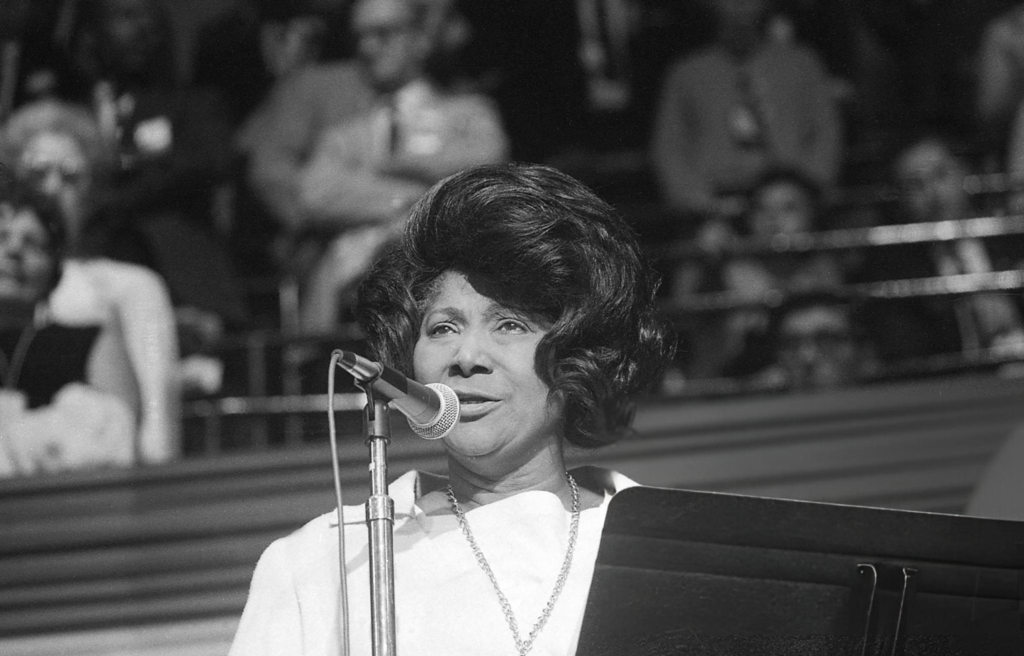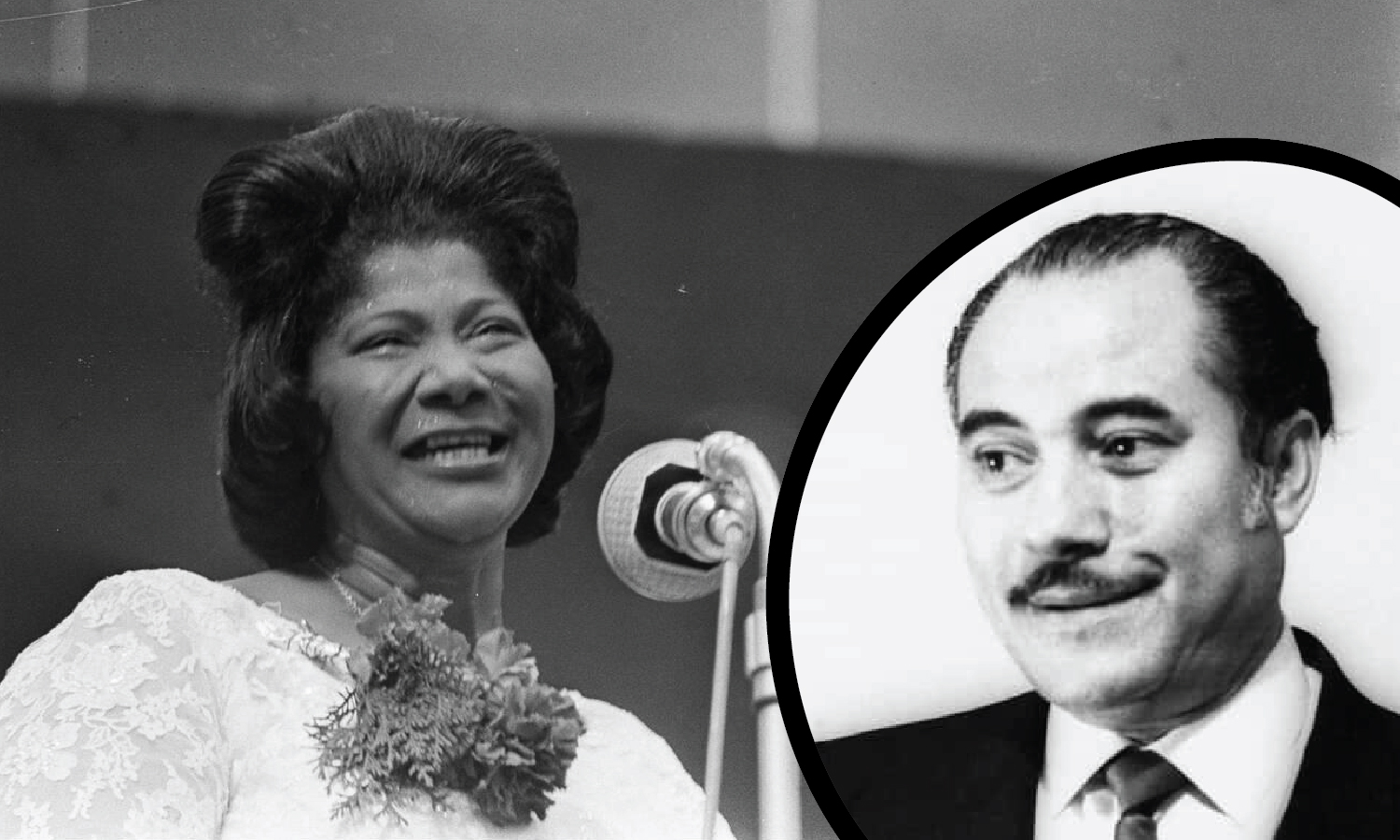In the world of jazz and gospel music, certain names stand out as towering figures in history. Mahalia Jackson, often referred to as the “Queen of Gospel,” is undoubtedly one of those names. However, her ex-husband, Sigmond Galloway, is less well-known, though his life and career were deeply intertwined with the world of music. This article explores the life of Sigmond Galloway, his journey from the rural South to the jazz clubs of Indiana, his marriage to Mahalia Jackson, and his lasting influence on the music world.
| Details | information |
|---|---|
| Full Name | Sigmond Galloway |
| Nickname | Sigmond |
| Date of Birth | May 18, 1922 |
| Birth Place | Wetumpka, Elmore, Alabama, USA |
| Nationality | American |
| Ethnicity | African-American |
| Marital Status | Divorced |
| Spouses | First wife: Celestine Person, Second wife: Mahalia Jackson |
| Children | None |
| Profession | Jazz Vocalist |
| Known For | Esteemed jazz vocalist and ex-husband of Mahalia Jackson |
| Net Worth | Estimated between $500,000 and $1 million |
Early Life and Background
Born on May 18, 1922, in Wetumpka, Elmore County, Alabama, Sigmond Galloway grew up in the rich cultural and musical atmosphere of the American South. Alabama, known for its historical significance in the development of blues, jazz, and gospel music, provided a fertile ground for young Sigmond’s musical interests. From an early age, he was immersed in the sounds of spirituals, blues, and gospel, which would go on to shape his musical career.
At a young age, Sigmond’s family moved to Gary, Indiana, a city renowned for its vibrant jazz scene. The transition to Gary marked a pivotal moment in Sigmond’s life, as the city was bustling with musical activity, offering a contrast to his rural upbringing. Gary was home to many talented musicians, and Sigmond quickly became part of this dynamic community, absorbing influences from the jazz greats who performed in the area.
Sigmond’s early years in Gary were not easy, however. He initially worked as a construction worker, but his passion for music remained unwavering. Over time, he transitioned from his day job to pursuing music full-time. His deep, resonant voice, combined with his ability to blend gospel elements with jazz, soon earned him recognition in the local jazz clubs and music venues. His musical style was distinct, and it wasn’t long before he became a fixture in the Midwest jazz scene.
Musical Journey
Sigmond Galloway’s rise as a jazz vocalist was not marked by sudden fame, but rather a steady build-up of respect and recognition among musicians and fans alike. While his name might not be as widely known as other jazz vocalists of his time, Sigmond’s contribution to the genre was substantial. His deep, soulful voice resonated with audiences, and his ability to infuse gospel sensibilities into jazz songs gave him a unique edge in the music world.

Sigmond’s performances were often marked by a mix of emotional depth and technical skill. He became known for his ability to interpret songs with passion, whether performing traditional jazz standards or more spiritual, gospel-influenced pieces. He toured extensively in the Midwest, particularly in Gary, Indiana, where jazz culture was thriving. While he did not achieve the same commercial success as some of his peers, Sigmond’s influence within the jazz community was profound. His collaborations with other musicians in the local scene allowed him to refine his sound and gain a reputation as a skilled and dedicated artist.
Though Sigmond never achieved mainstream stardom, his voice and style resonated with those who appreciated the intricacies of jazz and gospel music. His performances in local jazz clubs were highly regarded, and he became an integral part of the local music scene, performing alongside some of the finest musicians in the region.
Relationship with Mahalia Jackson
Perhaps one of the most intriguing aspects of Sigmond Galloway’s life is his marriage to Mahalia Jackson, the iconic gospel singer. Mahalia Jackson was already a well-established name in the world of gospel music when she met Sigmond in the 1940s. She was an influential figure who transcended the gospel genre, garnering international recognition and a reputation as one of the most powerful voices in music.
Sigmond and Mahalia’s marriage, which took place in the early 1950s, was one of two significant relationships in Sigmond’s life. He had previously married Celestine Person, but his second marriage to Mahalia Jackson would prove to be a complicated and ultimately short-lived union.
Their marriage was filled with challenges, particularly as both Sigmond and Mahalia had different professional ambitions. Mahalia was dedicated to her gospel music career, which often required extensive travel and performance commitments. Sigmond, on the other hand, was focused on his own career as a jazz vocalist, and the demands of their respective careers placed strain on their relationship. Despite these tensions, the couple remained together for over a decade.

The couple’s divorce in the 1960s marked the end of their personal relationship, though they continued to respect one another’s talents. Mahalia Jackson went on to become one of the most important figures in gospel music history, while Sigmond continued to perform and contribute to the jazz community. Despite the end of their marriage, they remained amicable, and Mahalia continued to offer her support for Sigmond’s musical endeavors.
Musical Contributions and Legacy
Sigmond Galloway’s contribution to jazz and gospel music remains significant, even if he did not achieve the fame of his ex-wife Mahalia Jackson. His ability to fuse gospel and jazz created a unique and soulful sound that resonated with audiences in the Midwest, particularly in Gary, Indiana, where the jazz scene was thriving.
Throughout his career, Sigmond was known for his powerful, velvety voice, which allowed him to deliver emotionally charged performances. His blend of gospel’s spiritual depth with the improvisational nature of jazz made him stand out in the music world. While he didn’t experience the same level of commercial success as some of his peers, Sigmond was respected by fellow musicians and jazz enthusiasts for his vocal talent and artistic integrity.
Although Sigmond’s name may not be as widely recognized as some of the jazz legends of his era, his influence within the jazz community remains. His legacy as a jazz vocalist is marked by his contributions to the Midwest jazz scene, and his ability to bring gospel music into the jazz world.
Frequently Asked Questions (FAQs)
1. What was Sigmond Galloway’s main contribution to music?
Sigmond Galloway was known for blending gospel and jazz music, creating a unique sound that resonated with audiences in the Midwest. His powerful voice and ability to interpret both gospel and jazz standards made him a respected figure in the jazz community.
2. Did Sigmond Galloway have any children?
No, Sigmond Galloway did not have any children.
3. How long were Sigmond Galloway and Mahalia Jackson married?
Sigmond Galloway and Mahalia Jackson were married for over a decade, from the early 1950s until their divorce in the 1960s.
4. What is Sigmond Galloway’s legacy in jazz music?
Sigmond Galloway’s legacy lies in his unique ability to blend gospel and jazz, creating a soulful and emotional style that resonated with fans. While he didn’t achieve mainstream fame, he was highly respected within the jazz community, particularly in Gary, Indiana.
5. What were some of Sigmond Galloway’s musical influences?
Growing up in Alabama and later moving to Gary, Indiana, Sigmond was influenced by the deep-rooted traditions of gospel, blues, and jazz. The jazz scene in Gary, which included many prominent musicians, also helped shape his style.
